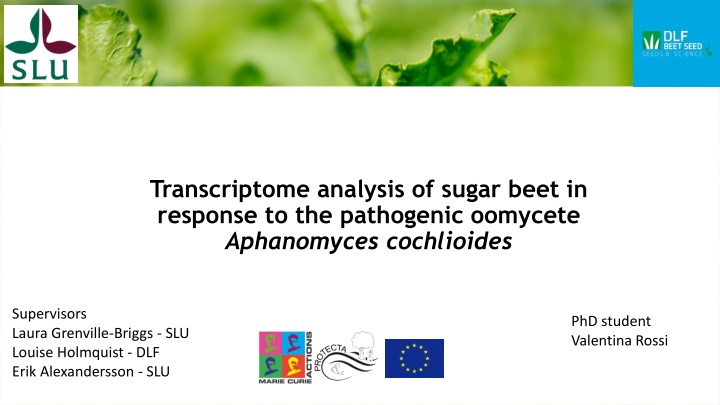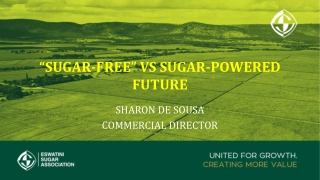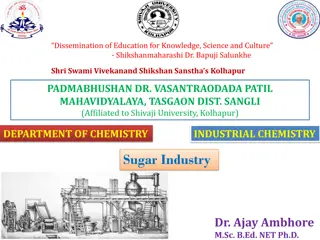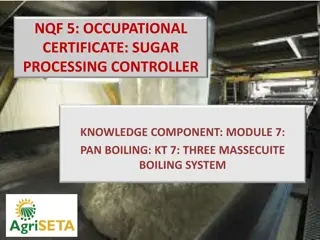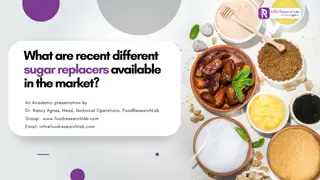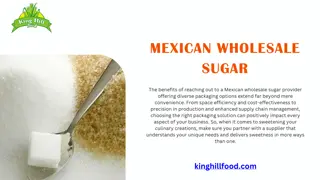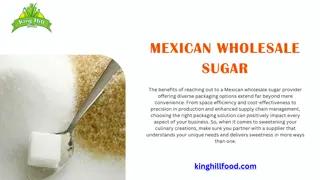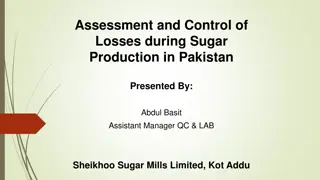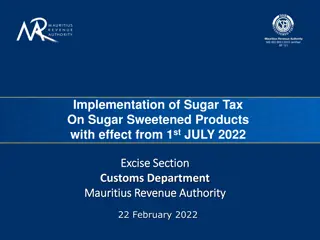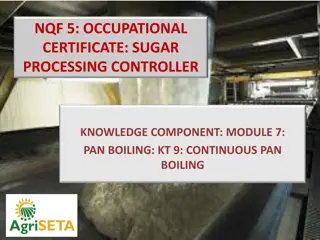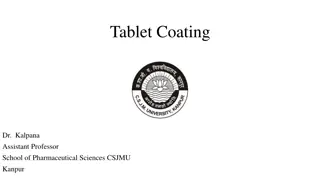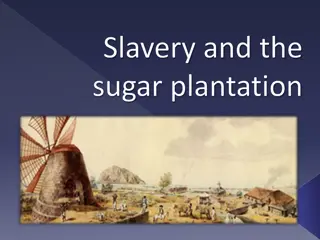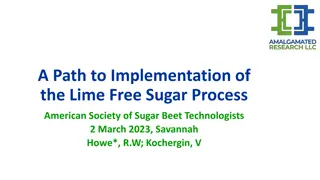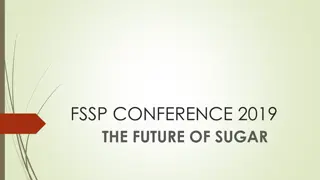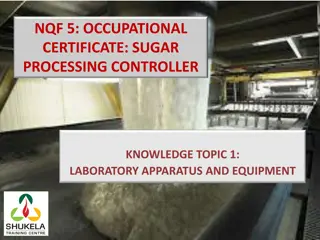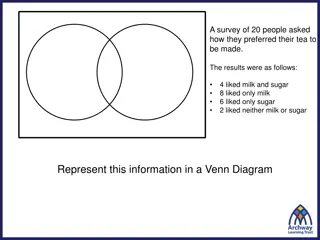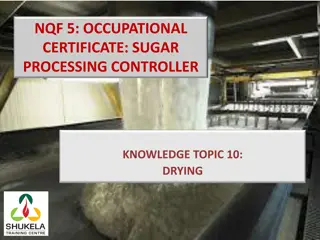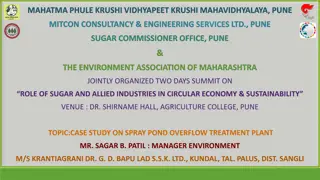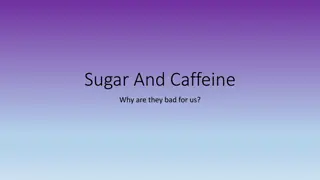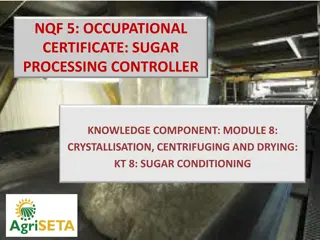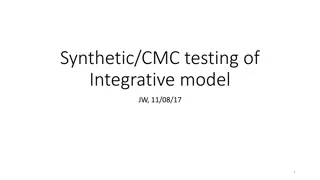Transcriptome Analysis of Sugar Beet Response to Aphanomyces cochlioides
The study focuses on identifying resistant sources, exploring infection progress, and investigating transcriptomic responses of sugar beet to A. cochlioides. Methods such as disease scoring, qPCR, and confocal microscopy are utilized, leading to a deeper understanding of the interaction dynamics.
Download Presentation

Please find below an Image/Link to download the presentation.
The content on the website is provided AS IS for your information and personal use only. It may not be sold, licensed, or shared on other websites without obtaining consent from the author.If you encounter any issues during the download, it is possible that the publisher has removed the file from their server.
You are allowed to download the files provided on this website for personal or commercial use, subject to the condition that they are used lawfully. All files are the property of their respective owners.
The content on the website is provided AS IS for your information and personal use only. It may not be sold, licensed, or shared on other websites without obtaining consent from the author.
E N D
Presentation Transcript
Transcriptome analysis of sugar beet in response to the pathogenic oomycete Aphanomyces cochlioides Supervisors Laura Grenville-Briggs - SLU Louise Holmquist - DLF Erik Alexandersson - SLU PhD student Valentina Rossi
Aphanomyces cochlioides Soil-borne plant oomycete Disease reported from major sugar beet growing areas Warm (22-28 C) and wet soil conditions, acidic pH Damping-off Chronic root rot Controlled by Controlled by Fungicide TACHIGAREN - Growth inhibitory activity Soil drainage Calcium carbonate Partially resistant varieties
Aims of the study Identification of resistant sources to A. cochlioides Exploring the infection progress in resistant and susceptible genotypes Investigation of sugar beet transcriptomic responses to A. cochlioides Identification of QTLs and candidate genes involved in resistance
Identification of resistant sources to A. cochlioides Climate chamber Disease scoring Field trial Infection process in resistant and susceptible genotypes Nucleic acid extraction In planta infection system qPCR Confocal microscopy
Infection process in resistant and susceptible genotypes 2 dpi A. cochlioides mycelia Resistant Susceptible iii
8 dpi Resistant Susceptible Resistant Susceptible
Transcriptome analysis of A. cochlioides - sugar beet interaction: Experimental design Partially resistant Susceptible 6-week-old Sugar beet lines Treatment Time-point 6hpi 30hpi
Transcriptome analysis of A. cochlioides - sugar beet interaction: Methods Plant inoculation RNA extraction Library prep Alignment to sugar beet ref genome EL10 Sequencing Differential expression analysis
Results 85-91% uniquely mapped reads to sugar beet ref genome 0.3% uniquely mapped reads to A. cochlioides ref genome >10.000 transcripts were differentially expressed in total Variation between samples is explained by their genotypes Other variables were evenly distributed between clusters
Enriched GO biological processes in different genotypes in response to A .cochlioides Susceptible Susceptible Partially resistant Partially resistant FDR cut off = 0.05 Fold Enrichment 2
Identification of QTLs and genes contributing to A. cochlioides defense responses Res Sus RNA-seq Differential expression analysis Differentially expressed transcripts X Defined set of candidate genes QTL mapping Phenotyping Position and number of regions of interest Mapping population Genotyping
Conclusions and future perspectives A. cochlioides invasion leads to changes in photosynthesis activity in susceptible genotypes Cell wall remodeling and H2O2 may play a key role in defense responses to A. cochlioides Genome mapping of candidate genes and QTL analysis can reveal useful association between QTLs and specific genes Development of resistant varieties for disease management and reduced chemical treatment
Acknowledgements Laura Grenville-Briggs Didymus Louise Holmquist Erik Alexandersson Joakim Herrstr m Per Snell Emma Thorell Britt-Louise Lennefors Gabriella Arndt Susann Lund Julia Bengtsson Kenneth Fredlund Thomas Kraft Tobias Ekblad Integrated Plant Protection Unit - SLU 13
Thank you for your attention!
